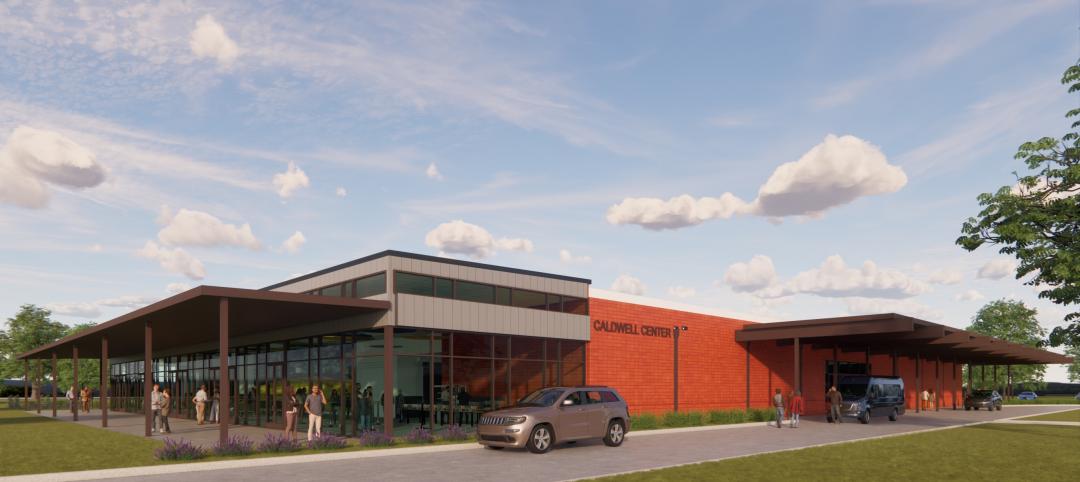As AEC firms dive deeper into BIM/VDC modeling and simulation workflows, the number of software tools put into play on a given project keeps growing exponentially. Firms recognize the value of implementing a mix of digital modeling tools, but the language barrier that exists between the different software platforms leads to tremendous waste and inefficiencies during the design and construction cycles.
Without the free and rapid exchange of data from the earliest stages of design through construction, Building Teams are forced to perform double work, such as manually inputting data and rebuilding early conceptual design models in a BIM platform. They also miss out on the potential of iterative design, where, for example, the results from daylight and energy modeling simulations can be fed back to the design team so it can make more-informed design decisions.
What is inadequate interoperability costing Building Teams? The most recent research—a NIST study published a decade ago (http://tinyurl.com/NISTsoftwareReport)—put the cost burden to the construction industry at $15.8 billion annually.
“When you look at the cost burden from a project budget perspective, interoperability accounts for 2-3% of the total construction budget,” says Nathan Miller, Associate Partner with BIM consulting firm CASE. “Just making a dent in that small percentage can yield a ton of benefits downstream.”
Firms are itching for interoperability solutions to establish data pipelines between software platforms and streamline workflows. This demand has led to growth in the emerging field of computational scripting, where firms develop (or commission third-party consultants like CASE to create) custom “hacks” that link digital tools and automate, accelerate, or eliminate wasteful processes.
“There are huge advantages to leveraging computational scripting and the broader concept of being able to customize your applications,” says Miller. “As a core capability, you’re going to see a greater need and desire among AEC firms to develop this skill set in-house, or have access to consulting firms like CASE.”
BD+C profiles two recent computational scripting projects that are making waves across the broader industry: Thornton Tomasetti’s TTX platform and CASE’s Rhynamo application.
THORNTON TOMASETTI’S TTX PLATFORM LINKS SIX DESIGN PLATFORMS
When structural engineering giant Thornton Tomasetti launched its in-house computational modeling and R&D incubator, CORE Studio, in 2011, one of its first objectives was to solve the BIM/VDC software language gap. At a minimum, the firm’s staff uses six primary design and modeling tools, none of which speak the same language. Incompatibility was costing Thornton Tomasetti thousands of staff hours annually by requiring its engineering teams to manually transfer project data from one design tool to another. It also impeded the exchange of data between team members during the design and construction cycles.
In the past, the firm had employed and tested a range of tools to translate project data from one platform to another, including IFC models and a suite of custom translators developed in house. But none of the solutions provided the ability to update and sync project models across multiple software platforms in real time, nor did they allow past versions of a model to be retrieved for analysis. These translators essentially performed “whole hog” imports that would completely overwrite the previous version, according to Benjamin Howes, Architect and Computational Designer with Thornton Tomasetti. “For example, if a draftsperson had been tagging and adding annotations to a Revit model and the model needed to be updated via a translation, all of the tagging and element-specific annotations would need to be redone.”
The firm’s solution was to make its design workflow software-agnostic by moving all critical project data into a custom database called TTX. More than two years in the making, the TTX platform provides real-time read, write, and sync capabilities across six software tools: ETABS, Grasshopper for Rhino, RAM Structural System, Revit, SAP 2000, and Tekla.
Using any one of these applications, Thornton Tomasetti’s engineers can “check out” the latest data on their project from TTX, work on the design and documentation, and then “check in” the updated version.

CORE Studio’s most prominent project to date is the TTX platform, a custom database that serves as the central repository for all of Thornton Tomasetti’s project data. Using TTX, the firm’s engineers can work on project models in any one of six software tools. Shown above is a project model displayed in all six software platforms supported by TTX: 1) SAP 2000, 2) Revit, 3) Tekla, 4) ETABS, 5) Grasshopper for Rhino, and 6) RAM Structural Systems. Screen shots: courtesy Thornton Tomasetti
“We may have 20 people working on any given project,” says Jonatan Schumacher, Director of CORE Studio. “It’s very difficult to coordinate between all team members. TTX serves as the coordination piece. Someone who’s been working on one platform can essentially update the database, and then the next morning everyone can checkout the latest data from the database and work in their respective modeling platform.”
Since the beta release of TTX in July 2013, more than 100 of the firm’s projects have been moved to the database, and nearly 12,000 data check-outs/check-ins have been executed. The firm currently has 95 regular TTX users. It also employs two full-time staff members to maintain the database, track updates to the major software platforms, and create custom tools for TTX.
“One tool we’re developing will allow us to easily compare two versions of the same database side by side,” says Robert K. Otani, PE, LEED AP, Principal with Thornton Tomasetti. “The first thing that any client wants to know is: What changes were made from the last issuance to this issuance? This tool will allow our teams to search for and highlight any change or series of changes, in real time. It’s going to be a huge time-saver.”
CORE Studio is also working on a Web-based dashboard for TTX that will allow clients and team members to view models remotely using any browser or device. “It’s essentially a lightweight version of a BIM model viewer, where users can spin around in the model, zoom in and out, and hover over elements to reveal the design attributes,” says Schumacher.
For more on TTX, visit www.ThorntonTomasetti.com/blog/post/43-Announcing-TTX.
RHYNAMO CREATES DATA BRIDGE BETWEEN REVIT AND RHINO
What started out as a nights and weekends coding project for CASE’s Miller has turned into one of the BIM consulting firm’s more exciting endeavors. Aptly named Rhynamo, the custom application serves as a bridge, linking two heavily used 3D modeling platforms—Rhino/Grasshopper for conceptual modeling and Autodesk Revit for BIM modeling—utilizing the open-source Dynamo graphical programming interface as the go-between.
Rhynamo offers AEC firms the ability to bypass the excruciatingly time-consuming process of rebuilding from scratch early conceptual Rhino models in the Revit platform.
With a few keystrokes, vital project data embedded in a Rhino model, such as geometries, coordinates, design parameters, and massing, cam be automatically imported into Dynamo, which can then be used “to build all sorts of systems on top of the BIM framework that Revit offers,” according to Miller.
“What Rhynamo does is provide a series of visual scripting nodes for Dynamo that allow a user to bring into Dynamo just about any geometric piece and different parts of data that are embedded inside a Rhino file,” says Miller. “That may involve translating geometry or using Rhynamo to coordinate parameters that might have been developed inside the Rhino environment—or simply providing an overall assist with that pipeline.”
In this YouTube video, CASE's Nathan Miller demonstrates the Rhynamo script.
Besides speed gains (which are difficult to measure, says Miller, since any time gained will likely be allotted for additional design work), Rhynamo offers Building Teams the opportunity for rapid iteration to occur throughout the design cycle.
“Instead of having to stop design at a certain point because the project deadline is looming, this seamless connection between design and production software allows design teams to move decisions further downstream and adapt to the changing conditions of a project much quicker,” says Miller.
“Design never stops,” he says. “When construction documents hit there are always going to be decisions that need to be made and studies to be done. Rhynamo is attempting to make the process as defined and efficient as possible.”
In less than three months since CASE launched a private beta test of Rhynamo, more than 300 BIM power users have downloaded the code for review. In the coming months, the firm plans to release the program as a free, open-source product, which will allow other firms to customize the code for their operations.
HDR and RTKL, two of CASE’s regular clients, are among the early adopters of Rhynamo. Others include a major retailer that used the tool to migrate its library of 2D drawings to Revit in order to automate the creation of 3D BIM elements.
“We were able to translate from 2D drawing to a coarse 3D Revit model in seconds,” says Miller. “Interoperability technologies allow us to leverage data in new ways across many platforms.”
For more on Rhynamo, visit: http://content.case-inc.com/rhynamo.
Related Stories
Resiliency | Aug 22, 2024
Austin area evacuation center will double as events venue
A new 45,000 sf FEMA-operated evacuation shelter in the Greater Austin metropolitan area will begin construction this fall. The center will be available to house people in the event of a disaster such as a major hurricane and double as an events venue when not needed for emergency shelter.
Cultural Facilities | Aug 21, 2024
Baltimore’s National Aquarium opens 10,000-sf floating wetland that mimics the harbor’s original tidal marsh habitat
The National Aquarium in Baltimore has opened the National Aquarium Harbor Wetland, a 10,000-sf floating wetland that mimics the Inner Harbor’s original Chesapeake Bay tidal marsh habitat. Located between Piers 3 and 4 on Baltimore’s Inner Harbor, the $14 million project features more than 32,000 native shrubs and marsh grasses.
Mixed-Use | Aug 21, 2024
Adaptive reuse of a Sears store becomes luxury mixed-use housing
6 Corners Lofts at 4714 W Irving Park Road, Chicago, Ill., opened in March of 2024 as a 394,000-sf adaptive reuse project born out of a former Sears store.
Building Materials | Aug 19, 2024
Federal 'buy clean' construction materials label program unveiled
The U.S. Environmental Protection Agency announced a plan for implementing a new label program to boost American production of more climate-friendly construction materials and products. The label program will prioritize steel, glass, asphalt and concrete.
Museums | Aug 19, 2024
The Tampa Museum of Art will soon undergo a $110 million expansion
In Tampa, Fla., the Tampa Museum of Art will soon undergo a 77,904-sf Centennial Expansion project. The museum plans to reach its $110 million fundraising goal by late 2024 or early 2025 and then break ground. Designed by Weiss/Manfredi, and with construction manager The Beck Group, the expansion will redefine the museum’s surrounding site.
AEC Tech | Aug 19, 2024
Harnessing AI to revolutionize architectural design and creativity
Architects are wondering if AI will replace us. For Vessel, the gains offset the fear. We believe there is wisdom in the unattributed quote, “You won’t lose your job to AI. You will lose your job to someone using AI.”
Reconstruction & Renovation | Aug 19, 2024
Movement to protect historic buildings raises sharp criticism
While the movement to preserve historic buildings has widespread support, it also has some sharp critics with well-funded opposition groups springing up in recent years. Some opponents are linked to the Stand Together Foundation, founded and bankrolled by the Koch family’s conservative philanthropic organization, according to a column in Governing magazine.
Government Buildings | Aug 19, 2024
GSA posts new RFI for enabling energy efficiency, decarbonization in commercial buildings
The U.S. General Services Administration (GSA), in collaboration with the U.S. Department of Energy, recently released a new Request For Information (RFI) focused on enabling energy efficiency and decarbonization in commercial buildings. GSA wants to test innovative technologies through GSA’s Center for Emerging Building Technologies.
MFPRO+ New Projects | Aug 16, 2024
At 60 stories, the Paramount multifamily development will stand as Nashville’s tallest high rise
When complete, the 60-story Paramount building, at 750 feet high, will be the tallest high rise tower in Nashville, Tenn., surpassing the city’s current record holder, the 617-foot AT&T Building. The $390 million Paramount project recently launched condo sales after securing more than $230 million in construction financing.
Urban Planning | Aug 15, 2024
New York City begins first large-scale porous pavement installation
New York City is installing its first large-scale porous pavement installation along seven miles of roadway in Brooklyn. The project will keep 35 million gallons of stormwater out of the combined sewer system each year, according to a news release.

















